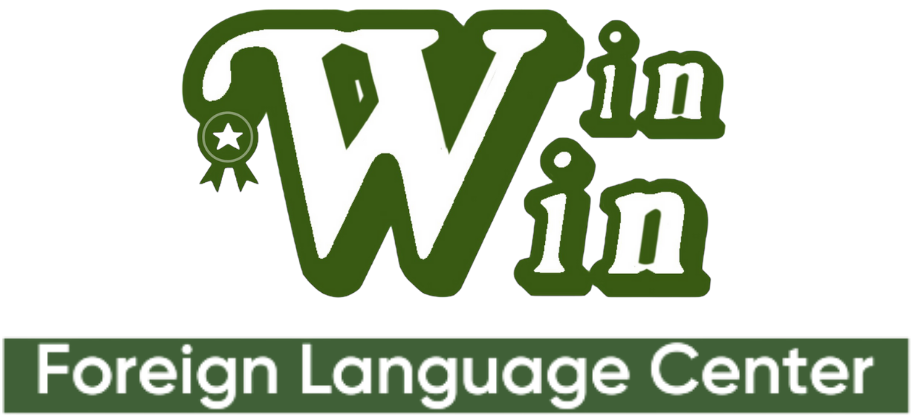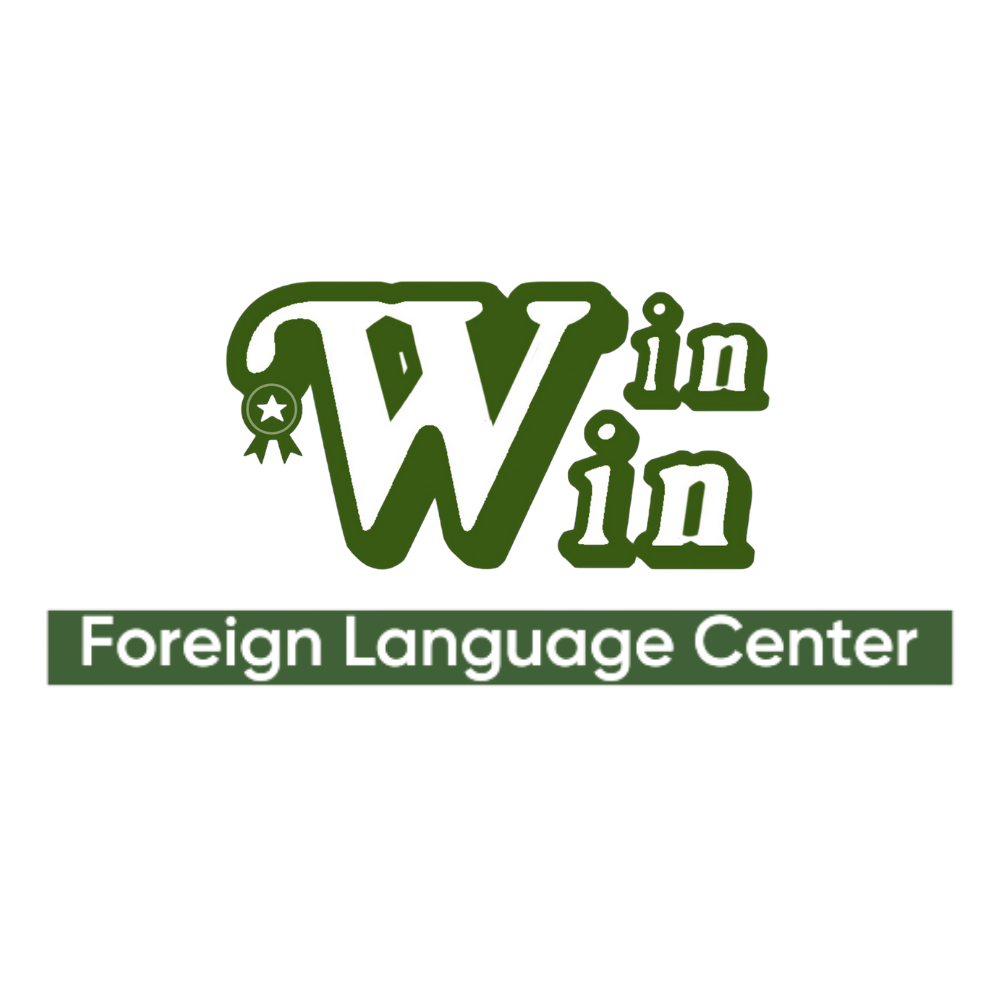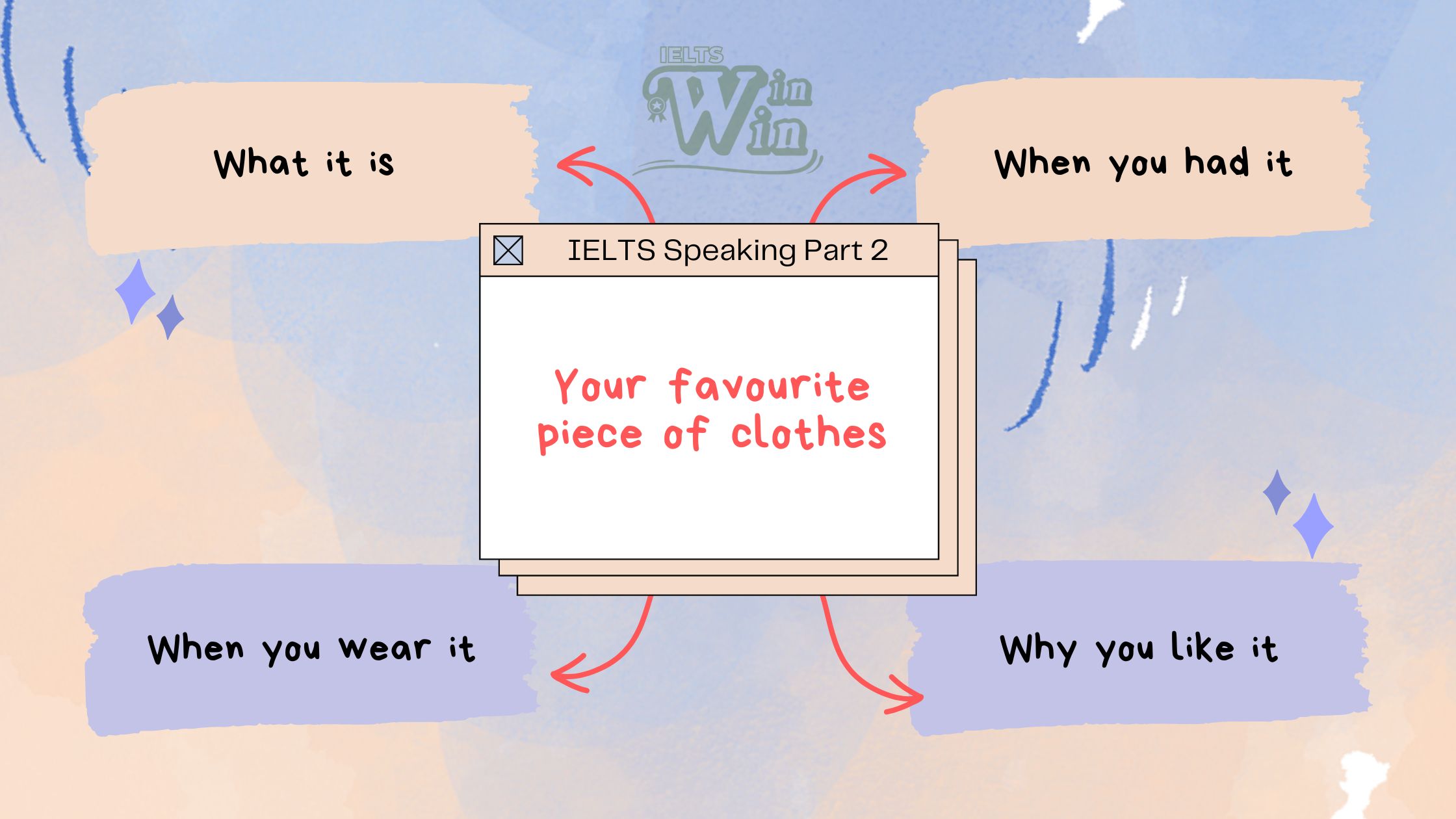✨Part 2: Your favorite piece of clothes
- What it is
- When you had it
- When you wear it
- Why you like it
This question instantly makes me think of my favorite piece of clothing which is a pair of well-fitted jeans.
If my memory serves me right, I purchased them approximately three years ago and have been wearing them regularly ever since. The reason I am particularly fond of these jeans is quite simple. As their fabrics are soft, yet durable, they enable me to move freely and comfortably throughout the day which are not only exceptionally comfortable but also versatile. Moreover, these jeans provide a relaxed and effortless feel whenever I run errands, meet up with people or engage in casual activities. Furthermore, I really appreciate the timeless nature of jeans, as they can be worn in various settings and paired with different types of clothing. For a casual look, I often combine them with a simple t-shirt or a cozy sweater. When I want to appear more put together, I usually pair them with a stylish button-down shirt or a light tone jacket. The jeans effortlessly adapt to any occasion, making them a reliable choice in my wardrobe. In addition to that, the faded blue wash of the jeans adds a touch of character and individuality. Over time, they have developed a unique and personalized look, reflecting my own experiences and adventures. This distinctiveness sets them apart from other jeans and makes them truly special to me.
In summary, my favorite piece of clothing, the well-fitted jeans, holds a special place in my heart due to their comfort, versatility, and personalized appearance. They have become a trusted companion for everyday activities and continue to be a staple in my wardrobe.
- instantly: /ˈɪnstəntli/ (adv) - ngay lập tức, tức thì
- well-fitted: /wɛl ˈfɪtɪd/ (adj) - vừa vặn, vừa khít, vừa với cơ thể
- purchased: /ˈpɜːrtʃəst/ (v) - đã mua
- fabrics: /ˈfæbrɪks/ (n) - chất liệu, vải
- exceptionally: /ɪkˈsɛpʃənəli/ (adv) - đặc biệt, cực kỳ, phi thường
- versatile: /ˈvɜːrsətl/ (adj) - đa năng, linh hoạt, có nhiều tài lẻ
- provide: /prəˈvaɪd/ (v) - cung cấp, chu cấp, đáp ứng
- effortless: /ˈefərtləs/ (adj) - dễ dàng, không cần nỗ lực, không mất sức
- errands: /ˈerəndz/ (n) - việc vặt, việc nhỏ, việc đưa thư
- Furthermore: /fɜːrˈðərmɔːr/ (adv) - hơn nữa, ngoài ra, còn có
- combine: /kəmˈbaɪn/ (v) - kết hợp, phối hợp, hợp nhất
- button-down: /ˈbʌtn daʊn/ (adj) - có cúc, có khuy, có nút
- effortlessly: /ˈefərtləsli/ (adv) - dễ dàng, không cần nỗ lực, không mất sức
- faded: /ˈfeɪdɪd/ (adj) - phai màu, nhạt màu, tàn phai
- individuality: /ˌɪndəvɪdʒuˈæləti/ (n) - tính cá nhân, tính riêng biệt, sự độc nhất vô nhị
- personalized: /ˈpɜːrsənəlaɪzd/ (adj) - được cá nhân hóa, được tùy chỉnh, được làm riêng cho
- distinctiveness: /dɪˈstɪŋktɪvnəs/ (n) - tính độc đáo, tính đặc thù, sự khác biệt rõ rệt
- versatility: /ˌvɜːrsəˈtɪləti/ (n) - tính đa năng, tính linh hoạt, tính năng động
- companion: /kəmˈpænjən/ (n) - bạn đồng hành, người đi cùng, vật đồng hành
- wardrobe: /ˈwɔːrdroʊb/ (n) - tủ quần áo, tủ đồ
Part 3
✨What kinds of clothes are common in Vietnam?
In Vietnam, the common types of clothes vary depending on the occasion and cultural norms. Traditional clothing such as the "ao dai" for women and the "ao gam" for men hold cultural significance and are worn on special occasions, ceremonies, and festivals. For daily wear, the Vietnamese often opt for modern and Western-style clothing like shirts, pants, dresses, skirts, and t-shirts. Additionally, due to the tropical climate, lightweight and breathable fabrics such as cotton and linen are popular choices for everyday attire.
- occasion: /əˈkeɪʒn/ (n) - dịp, cơ hội, sự kiện
- Traditional: /trəˈdɪʃənl/ (adj) - truyền thống, theo truyền thống, cổ truyền
- cultural: /ˈkʌltʃərəl/ (adj) - văn hoá, thuộc về văn hoá, liên quan đến văn hoá
- Western-style: /ˈwɛstərn staɪl/ (adj) - phong cách Tây Âu, phong cách phương Tây
- lightweight: /ˈlaɪtweɪt/ (adj) - nhẹ, nhẹ nhàng, không nặng
- fabrics: /ˈfæbrɪks/ (n) - chất liệu, vải
✨When do people wear formal clothes?
Formal clothes are typically worn during important events, formal ceremonies, business meetings, or social gatherings that require a more professional and polished appearance. Some prime examples of this are weddings, official functions, award ceremonies, or job interviews. In these settings, people often wear suits, dresses or traditional attire, depending on the cultural context and personal preferences.
- ceremonies: /ˈserəmoʊniz/ (n) - nghi thức, buổi lễ, nghi lễ
- gatherings: /ˈɡæðərɪŋz/ (n) - sự tụ tập, buổi sum họp, đám đông
- professional: /prəˈfɛʃənl/ (adj) - chuyên nghiệp, nghiêm túc, có chuyên môn
- polished: /ˈpɑːlɪʃt/ (adj) - lịch thiệp, tế nhị, tinh tế
- attire: /əˈtaɪr/ (n) - trang phục, quần áo; (v) - mặc, khoác lên
- preferences: /ˈprɛfərənsɪz/ (n) - sở thích, ưa thích, sự ưa chuộng, sự lựa chọn
✨Who cares about fashion more? Young or old people?
From my point of view, young people tend to be more focused on fashion trends and personal style compared to older individuals. Younger generations often prioritize keeping up with the trend such as experimenting with different clothing styles, and expressing their individuality through fashion choices. They are more likely to keep pace with fashion influencers, celebrity fashion, and popular culture. In spite of that, it is important to note that personal preferences and interest in fashion can vary among individuals, regardless of age.
- focused: /ˈfoʊkəst/ (adj) - tập trung, tập chỉnh, tập trung vào
- compared: /kəmˈpɛrd/ (v) - so sánh, đối chiếu, cân nhắc
- generations: /ˌdʒɛnəˈreɪʃənz/ (n) - thế hệ, đời, giai đoạn
- experimenting: /ɪkˈspɛrɪmɛntɪŋ/ (v) - thử nghiệm, thử làm, làm thí nghiệm
- individuality: /ˌɪndəvɪdʒuˈæləti/ (n) - tính cá nhân, tính riêng biệt, sự độc nhất vô nhị
- influencers: /ˈɪnfluənsərz/ (n) - người ảnh hưởng, người có ảnh hưởng, nhân vật có ảnh hưởng
- regardless: /rɪˈɡɑːrdləs/ (adv) - bất chấp, mặc dù, không quan tâm đến
✨What is important when buying clothes?
When buying clothes, several factors are significant to consider. Firstly, the fit and comfort of the clothing item are crucial. Clothes that fit well and are comfortable to wear contribute to one's confidence and overall satisfaction. Additionally, the quality of the fabric and craftsmanship should be assessed to ensure durability and longevity. Style and personal preference play a crucial role in selecting clothes which align with one's taste and fashion sense. Finally, price and affordability are also important considerations, along with the ethical and sustainable practices of the brand or manufacturer.
- consider: /kənˈsɪdər/ (v) - xem xét, cân nhắc, suy nghĩ về
- comfort: /ˈkʌmfərt/ (n) - sự thoải mái, sự an ủi, sự dễ chịu
- contribute: /kənˈtrɪbjut/ (v) - đóng góp, góp phần, cống hiến
- satisfaction: /ˌsætɪsˈfækʃn/ (n) - sự hài lòng, sự thỏa mãn, sự vừa ý
- durability: /ˌdʊrəˈbɪləti/ (n) - độ bền, tính bền vững, độ bền cao
- longevity: /lɑːnˈdʒevəti/ (n) - tuổi thọ, sự lâu dài, sự kéo dài
- crucial: /ˈkruːʃəl/ (adj) - quan trọng, hết sức quan trọng, cốt yếu
- affordability: /əˌfɔːrdəˈbɪləti/ (n) - tính khả năng mua được, tính giá cả phải chăng, sự có thể chi trả được
- ethical: /ˈeθɪkl/ (adj) - đạo đức, đạo đức học, thuộc đạo đức
- sustainable: /səˈsteɪnəbl/ (adj) - bền vững, có thể bảo tồn được, có thể duy trì được
- manufacturer: /ˌmænjuˈfæktʃərər/ (n) - nhà sản xuất, nhà chế tạo, nhà sản suất
✨Do you think traditional costumes are important?
Yes, traditional costumes hold significant cultural and historical importance. They serve as a representation of a country's heritage, customs, and identity. Traditional costumes embody the cultural values, artistic expressions, and craftsmanship of a particular community or region. Besides, they also play a vital role in preserving and showcasing the rich cultural diversity of a nation. Last but not least, traditional costumes often hold symbolic meaning and are worn during traditional ceremonies, festivals, and special occasions, contributing to a sense of cultural pride and continuity.
- costumes: /ˈkɑːstjumz/ (n) - trang phục, đồ trang trí, trang phục biểu diễn
- representation: /ˌreprɪzenˈteɪʃn/ (n) - sự đại diện, sự miêu tả, sự tượng trưng
- expressions: /ɪkˈsprɛʃənz/ (n) - biểu cảm, sự diễn tả, sự bày tỏ
- craftsmanship: /ˈkræftsmənʃɪp/ (n) - sự khéo léo, sự tinh xảo, sự làm thủ công
- showcasing: /ˈʃoʊkeɪsɪŋ/ (n) - sự trưng bày, sự giới thiệu, sự trình diễn
- ceremonies: /ˈserəmoʊniz/ (n) - nghi thức, buổi lễ, nghi lễ
- continuity: /ˌkɑːntɪˈnuːəti/ (n) - sự liên tục, tính liên tục, tính tiếp diễn
✨When do people in Vietnam wear traditional costumes?
In Vietnam, people wear traditional costumes on various occasions and events that celebrate the country's cultural heritage. Traditional costumes like the "ao dai" and "ao gam" are commonly worn during traditional weddings, festivals such as Tet (Lunar New Year), and cultural performances. They are also worn by students on important school events and national holidays to display patriotism and promote cultural identity. Additionally, traditional costumes may be worn by performers, artists, and those involved in cultural preservation activities.
- occasions: /əˈkeɪʒnz/ (n) - dịp, cơ hội, sự kiện
- heritage: /ˈherɪtɪdʒ/ (n) - di sản, di sản văn hóa, di sản quốc gia
- commonly: /ˈkɑːmənli/ (adv) - thường, thông thường, phổ biến
- performances: /pərˈfɔːrmənsɪz/ (n) - buổi biểu diễn, sự trình diễn, kết quả biểu diễn
- patriotism: /ˈpeɪtriətɪzəm/ (n) - lòng yêu nước, tình yêu đất nước, chủ nghĩa yêu nước
- identity: /aɪˈdɛntəti/ (n) - danh tính, bản sắc, tên tuổi
- performers: /pərˈfɔːrmərz/ (n) - người biểu diễn, diễn viên, nghệ sĩ biểu diễn
- involved: /ɪnˈvɑːlvd/ (adj) - liên quan, tham gia, dính líu
- preservation: /ˌprɛzərˈveɪʃn/ (n) - sự bảo tồn, sự bảo quản, sự duy trì
✨Why do people wear uniforms?
People wear uniforms for several reasons. Uniforms are often worn in professional settings to promote a sense of unity, equality, and identification within an organization or profession. They create a cohesive visual representation and help distinguish individuals belonging to a particular group or occupation. Uniforms can also serve practical purposes, such as ensuring safety in certain industries, providing ease of recognition for customers or clients, and establishing a professional image.
- uniforms: /ˈjuːnɪfɔːrmz/ (n) - đồng phục, trang phục đồng đều
- professional: /prəˈfɛʃənl/ (adj) - chuyên nghiệp, nghiêm túc, có chuyên môn
- cohesive: /koʊˈhiːsɪv/ (adj) - kết dính, liên kết, gắn bó
- representation: /ˌreprɪzenˈteɪʃn/ (n) - sự đại diện, sự miêu tả, sự tượng trưng
- distinguish: /dɪˈstɪŋɡwɪʃ/ (v) - phân biệt, phân định, làm nổi bật
- practical: /ˈpræktɪkl/ (adj) - thực tế, có ích, hữu dụng
- industries: /ˈɪndəstriːz/ (n) - ngành công nghiệp, ngành sản xuất, các ngành kinh tế
- recognition: /ˌrekəɡˈnɪʃn/ (n) - sự công nhận, sự thừa nhận, sự nhận ra
✨Why do people in different countries wear different types of clothes?
The types of clothes people wear in different countries are influenced by a variety of factors. Firstly, climate and geographical location play a significant role. Clothing choices are adapted to the local weather conditions, with warmer regions favoring lightweight and breathable fabrics, while colder regions require heavier and insulated clothing. Additionally, cultural traditions, religious beliefs, and social norms influence clothing preferences. Historical and socioeconomic factors also shape fashion choices, with cultural heritage, colonial influences, and globalization impacting the adoption of certain clothing styles. Furthermore, individual preferences and personal expression contribute to the diversity of clothing choices across countries.
- influenced: /ˈɪnfluənst/ (v) - ảnh hưởng, tác động, chi phối
- factors: /ˈfæktərz/ (n) - yếu tố, nhân tố, thành phần
- breathable: /ˈbreθəbl/ (adj) - thở được, thoáng khí, thông thoáng
- insulated: /ˈɪnsəleɪtɪd/ (adj) - cách nhiệt, cách điện, được bảo vệ
- religious: /rɪˈlɪdʒəs/ (adj) - tôn giáo, thuộc tôn giáo, sùng đạo
- socioeconomic: /ˌsoʊsi.oʊˌiːkəˈnɑːmɪk/ (adj) - kinh tế xã hội, liên quan đến kinh tế và xã hội
- colonial: /kəˈloʊniəl/ (adj) - thuộc địa, thuộc địa hóa, thuộc đệ tam thế
- globalization: /ˌɡloʊbəlɪˈzeɪʃn/ (n) - toàn cầu hóa, sự toàn cầu hóa, quá trình toàn cầu hóa
Xem thêm các bài viết về Speaking Part 2 và 3 ở đây bạn nhé
Đừng ngần ngại để lại thông tin hoặc liên hệ với chúng mình qua địa chỉ sau đây để IELTS WinWin có thể hỗ trợ tốt nhất cho bạn nhé!
Địa chỉ: 118 Nguyễn Xuân Khoát, P. Tân Thành, Q. Tân Phú, TP. Hồ Chí Minh.
Fanpage: IELTS WinWin



